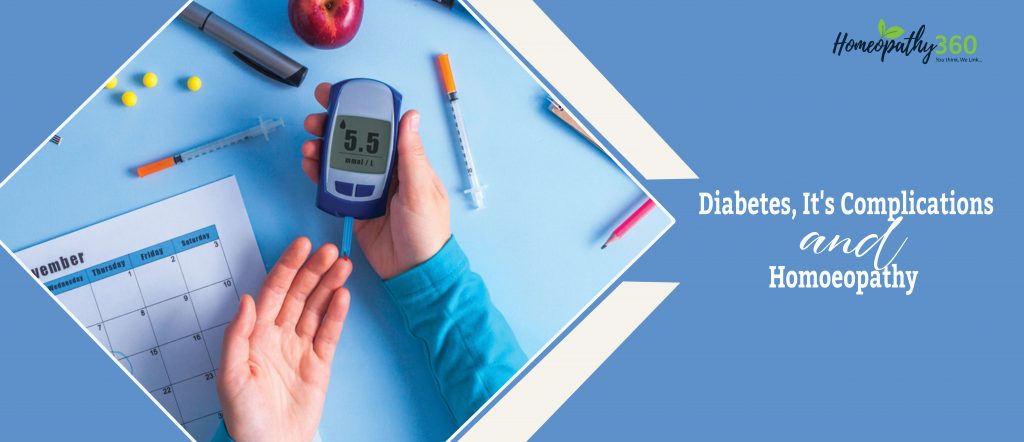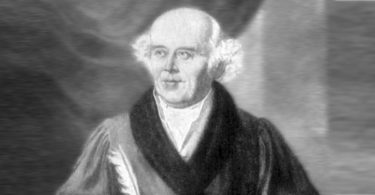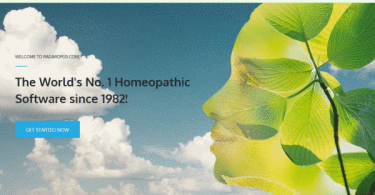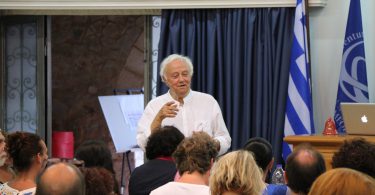
ABSTRACT
Diabetes mellitus is a chronic metabolic disorder with huge social, health and economic consequences. Globally, an estimated 537 million adults are living with diabetes and it was considered as the 9th leading cause of mortality globally, attributing to over 2 million deaths annually. Diabetes is associated with many complications such as metabolic imbalances, cardiovascular diseases, nerve and brain damage, kidney failure, gastrointestinal changes etc. However, its complication can be reduced through proper awareness and timely treatment. Homoeopathic medicines are found to be safe and effective in the treatment of diabetes mellitus. It not only brings down the blood sugar levels but also improves both mental as well as physical symptoms of the patient.
KEYWORDS: Homoeopathy, diabetes mellitus, insulin dependent, non-insulin dependent, complication.
INTRODUCTION
Diabetes mellitus is a group of metabolic diseases involving carbohydrate, lipid, and protein metabolism. It is characterized by persistent hyperglycemia, as a result of defects in insulin secretion, insulin action or a combination of both. There are two main types of diabetes mellitus: Type1 (insulin dependent) and Type 2 (Non-insulin dependent). Type 1 diabetes results from autoimmune destruction of the β- cells of the pancreatic islets and Type 2 diabetes is caused from impaired insulin secretion and resistance to the action of insulin1.
EPIDEMOLOGY– Globally, an estimated 537 million adults are living with diabetes, according to 2021 data from the international diabetes federation2. Diabetes was the 9th leading cause of mortality globally in 2019, attributing to over 2 million deaths annually due to diabetes and kidney diseases associated with diabetes3. Women who had gestational diabetes during pregnancy have a 20-50% increased risk of developing type 2 DM later in life. The overall prevalence of diabetes increases with age, with the largest increase in people over 65 years of age4.
Etiological classification of Diabetes Mellitus –
- Type 1 diabetes
- Immune-mediated
- Idiopathic
- Type 2 diabetes
- Other specific types
- Genetic defects of β-cell function
- Genetic defects of insulin action
- Pancreatic diseases.
- Excess endogenous production of hormonal antagonists to insulin.
Eg. Growth hormone- acromegaly
Glucocorticoids- cushing’s syndrome
Glucagon- glucagonoma
Catechloamines- phaeochromocytoma
Thyroid hormones- thyrotoxicosis
- Drug- induced
- Uncommon forms of immune mediated diabetes
- Associated with genetic syndromes
- Gestational diabetes5
PATHOPHYSIOLOGY-
Insulin plays a major role in regulating glucose levels in the body. Insulin can inhibit the breakdown of glycogen or the process of gluconeogenesis, it can stimulate the transport of glucose into fat and muscle cells, and it can stimulate the storage of glucose in the form of glycogen. Insulin is released into blood by beta cells in the islets of Langerhans in the pancreas, in response to raising level of blood glucose, typically after eating. Lower glucose levels results in decreased insulin release from the beta cells and in the breakdown of glycogen to glucose. Insufficient levels of insulin or poor response of cells to the levels of insulin or insulin itself is defective, then the glucose is not absorbed properly by the body cells and leads to high levels of blood glucose, poor protein synthesis, and metabolic derangements due to complete insulin deficiency. Increase blood glucose for longer period leads to glycosuria. This increase the osmotic pressure of urine and inhibits reabsorption of water by kidneys resulting in polyuria. The blood volume lost is replaced osmotically from water in body cells and other body compartments, causing dehydration and increased thirst- polydipsia. Further, intracellular glucose deficiency stimulates appetite leading to excessive food intake- polyphagia6.
SIGNS AND SYMPTOMS –
Usually the patient remains asymptomatic in the early stages, it is essential that people are educated on the warning signs of diabetes. Some of the warning signs are7–
1. Unexplained weight loss
2. Fatigue
3. Irritability
4. Repeated infections i.e. genital areas, urinary tract, skin, oral cavity, delayed wound healing.
5.Dry mouth
6. Burning pain, numbness on feet
7. Itching
8.Reactive hypoglycaemia
9.Acanthoses nigricans
10. Decreased vision
11. Impotency or erectile dysfunction.
12. Polyuria, polyphagia, polydipsia
DIAGNOSIS OF DIABETES AND PRE-DIABETES5–
DM is diagnosed with a test for the glucose content in the blood, and is confirmed by following-
- Either plasma glucose in random sample or 2 hrs after 75g glucose load ≥ 11.1mmol/L(200mg/dl) or
- Fasting plasma glucose ≥ 7.0 mmol/L (126 mg/dl) or
- HbA1C ≥ 48 mmol/mol
In asymptomatic patients,2 diagnostic tests are required to confirm diabetes.
Pre-diabetes is classified as-
- Impaired fasting glucose= fasting plasma glucose ≥ 6.2 mmol/L (110 mg/dl) and < 7.0 mmol/L (126mg/dl)
- Impaired glucose tolerance = fasting plasma glucose < 7.0 mmol/L(126mg/dl) and 2hr glucose after 75g oral glucose drink 7.8-11.1 mmol/L (140-200 mg/dl)
HbA1c criteria for pre-diabetes vary. The national institute of health and care excellence (NICE) guidelines recommend considering an HbA1c range of 42-47 mmol/mol to be indicative of pre-diabetes: the American diabetes association guidelines suggest a range of 39-47 mmol/mol. The American diabetes association also suggest a lower fasting plasma glucose limit of ≥ 5.6 mmol/L (100 mg/dl) for impaired fasting glucose.
COMPLICATIONS OF DIABETES MELLITUS–
As a consequence of hyperglycaemia of diabetes, every tissue and organ of the body undergoes biochemical and structural alternations which account for the major complications in diabetes which may be acute metabolic or chronic systemic. Both types of DM may develop complications which are broadly divided into 2 major groups8–
- ACUTE METABOLIC COMPLICATIONS– They develop acutely.
- Diabetes ketoacidosis (DKA) -ketoacidosis is almost exclusively complication of type 1 DM. clinically, the condition is characterised by anorexia, nausea, vomiting, deep and fast breathing, mental confusion, and coma.
- Hyperosmolar hyperglycaemic nonketotic coma (HHS) it is a complication of type 2 DM. Blood sugar and plasma osmolarity is extremely high. Thrombotic and bleeding complication are frequent due to high viscosity of blood. The mortality rate in hyperosmolar hyperglycaemic nonketotic coma id high.
- Hypoglycaemia- it develops in patients of type 1 DM. it may develop from excessive administration of insulin, missing a meal or due to stress.
- LATE SYSTEMIC COMPLICATION– A number of systemic complication may develop after a period of 15-20 years in either type of diabetes.
- Atherosclerosis- it is seen in both type 1 and type 2 DM. Consequently, atherosclerotic lesions appear and are more often associated with complicated plaques such as ulceration, calcification, and thrombosis. The possible ill-effects of accelerated atherosclerosis in diabetes are early onset of coronary artery disease, slight myocardial infarction, cerebral stroke and gangrene of toes and feet.
- Diabetic microangiopathy– It is characterised by basement membrane thickening of small blood vessels and capillaries of different organs and tissues such as skin, skeletal muscles, eye and kidney.
- Diabetic nephropathy– Renal involvement is a common complication and a leading cause of death in diabetes. 4 types of lesions are described in diabetic neuropathy:
- Diabetic glomerulosclerosis
- Vascular lesions that include hyaline arteriosclerosis of afferent and efferent arterioles and atheroma of renal arteries.
- Diabetic pyelonephritis and necrotising renal papillitis
- Tubular lesions or Armanni-Ebstein lesion.
- Diabetic neuropathy– it affects all parts of nervous system but symmetric peripheral neuropathy is most characteristic.
- Diabetic retinopathy– it is the leading cause of blindness.
- Infections– diabetics have high susceptibility to infections such as tuberculosis, pneumonia, pyelonephritis, otitis, carbuncles and diabetic ulcers. This must be due to various factors such as impaired leucocyte functions, reduced cellular immunity, poor blood supply due to vascular involvement and hyperglycaemia per se.
MANAGEMENT OF DIABETES–
- Relief from symptoms of diabetes and improvement in quality of life.
- Glycaemic control and prevention of acute complications.
- Identification and management of comorbid conditions like obesity, hypertension, dyslipidaemia.
- Prevention of macrovascular complications like cardiovascular, cerebrovascular and peripheral vascular disease.
- Prevention of infections9.
The complete treatment of people with diabetes requires advocating a healthy life style with focus on increased physical activity and a proper balanced diet in addition to prescribing medications.
HOMOEOPATHIC MANAGEMENT-
Homoeopathic medicines are found to be safe and effective in the treatment of diabetes. Constitutional anti miasmatic treatment are only way for radical cure of DM along with proper diet and regular exercise. Our aim is merely not to bring down the blood sugar levels but to have improvement in both mental as well as physical symptoms of the patient. A few medicines are discussed below with their proper indication-
- ABROMA AUGUSTA- It is indicated in both diabetes mellitus and diabetes insipidus. The patient is pale, wrinkled, old looking, irritable. Weakness of vision. dry, burning sensation in throat and mouth; drinks large quantity of cold water at a time yet dryness persists; dry and clean tongue; lips dry and bluish. Unnatural appetite, can eat short after a good meal. Desire to drink after urination which relieves thirst; white ulcers in the mouth of prepuce caused by excessive passage of sugar in urine. Drowsiness, insomnia, prostration and aversion to do any labour.
- CEPHALANDRA INDICA– The patient is morose, fretful and disinclined to do any work; weakness; burning of eyes and face; dryness of mouth with great thirst for large quantity of water at a time. Dryness of throat; loss of appetite; profuse urination ; weakness and exhaustion after urination; sugar in urine; diabetes mellitus. Burning all over the body.
- GYMNEMA SYLVESTRE- This remedy is known as ‘sugar killer’. Urine profuse loaded with sugar. Exhaustion after urination; white, copious urine. Specific gravity of urine high. Burning all over the body; diabetic carbuncle; great thirst; weakness of sexual power.
- SYZYGIUM JAMBOLANUM– Weakness and emaciation with much thirst and profuse flow of wine in every 2 hours. No other remedy causes in so marked degree the diminution and disappearance of sugar in the urine; diabetic ulceration.
- ACETIC ACID– The patient is pale, lean persons with lax, flabby muscles. It produces great debility, frequent fainting, profuse urination and sweat. Wasting and debility; liquifies albuminous and fibrous deposits; intense burning thirst; passes large quantity of pale urine. Diabetes with great thirst and debility.
- COCA- It is called as mountaineer’s remedy. Irritable, melancholy person. No appetite but for sweets. Diabetes with impotency.
- PHOSPHORIC ACID– The common acid debility is very marked in this remedy, producing a nervous exhaustion. Mental debility first; later physical. It is markedly indicated in young people who grow rapidly, overtaxed mentally or physically. Impaired memory; lips are dry, cracked; tongue is dry, swollen, with viscid and frothy mucus. frequent ,profuse, watery, milky urine; diabetes; frequent urination at night. Phosphaturia. Sexual power deficient.
- PHLORIDZIN- Diabetes with fatty degeneration of liver, glycosuria. It compels the secretory epithelium of the kidney to break down serum albumin into sugar. There is no increase in blood sugar; no hyperglycaemia results.
- URANIUM NITRICUM– great emaciation, debility, and tendency to ascites and general dropsy. Glycosuria with increased urine. Dry mucous membrane and skin; excessive thirst, excessive appetite. Copious urination. Diabetes mellitus and diabetes insipidus.
- CHIMAPHILA UMBELLATA– Burning and scalding during micturition, sugar in urine. Unable to urinate without standing with the feet wide apart and body inclined forward.
- HELONIAS- It is mainly indicated in women with prolapse and atony, enervated by indolence and luxury; worn out with hard work, mental or physical; overtaxed muscles burn and ache; so tired cannot sleep. Irritable, fault finding, cannot endure least contradiction or receive least suggestion. Albuminuria: acute or chronic, during pregnancy, with great weakness, languor, drowsiness. Diabetes: first stage; urine profuse, clear saccharine, phosphatic; lips dry, stick together, great thirst, restlessness; emaciation, irritable and melancholic.
- LACTICUM ACIDUM– Diabetes; tongue dry, parched. Great thirst; voracious hunger. Burning, hot gas from stomach to throat, causing profuse secretion of tenacious mucus. Large quantity of urine passed, frequently. Saccharine.
weakness as if from exercise, with rheumatic pains in the bones.
- INSULIN- It is an active principle from the pancreas which affects sugar metabolism. Beside the use of insulin in the treatment of diabetes, It helps in restoring the lost ability to oxidize carbohydrate and again storing glycogen in the liver. Glycosuria; it is indicated in cases of skin irritation, boils or varicose ulceration with polyuria.
- LYCOPUS VIRGINICUS– Drinks large quantity of water; passes 9-11 quarts of urine a day; fearful thirst, nothing but coldest water would satisfy; very irritable; Profuse flow of limpid, watery urine, especially when the heart is most irritable; scanty urine. Bladder feels distended with urine when empty. Diabetes mellitus with great thirst and emaciation.
- PLUMBUM METALLICUM– Excessive and rapid emaciation with great weakness. Urine: frequent, ineffectual tenesmus, albuminous, low specific gravity. Chronic interstitial nephritis, with great pain in abdomen. Urine scanty. Loss of sexual power.
- THYROIDINUM– Emaciation and muscular weakness; great thirst, increased appetite with improved digestion; increased flow of urine. Polyuria; albuminuria; sugar in urine. Diabetes mellitus.
- ARSENICUM BROMATUM– It is a great anti psoric and antisyphilitic remedy. Diabetes mellitus. In diabetes three drops three times a day in a glass of water.
- CHIONANTHUS VIRGINICA-Debility and emaciation with liver disorders. Profuse salivation with dryness of mouth not relieved by water. Complete loss of appetite; tongue heavily coated. No appetite; pancreatic diseases; diabetes mellitus. Urine: large, frequent, high specific gravity, sugar in urine.
- NATRUM MURIATICUM– It is indicated in anaemic, and cathectic; with loss of vital fluids. Great emaciation; losing flesh while living well. Emaciation especially of throat and neck. Dry mucous membrane; great weakness and weariness. Diabetes. Sense of dryness in mouth; immoderate thirst, hungry yet looses flesh. Unquenchable thirst. Urine: increased, involuntary when walking, coughing etc. Impotency.
- GLYCERINUM- It is a deep and long acting remedy, building up tissues, hence of great use in marasmus, debility, mental and physical, diabetes. Urine profuse and frequent. Increased specific gravity of urine; sugar in urine.
CONCLUSION–
Diabetes mellitus is a metabolic disease that can be prevented through lifestyle modification, diet control, exercise and obesity. Educating the population is the key to the control of emerging epidemic. However, its complication can only be reduced through proper awareness and timely treatment. Homoeopathic medicines are found to be safe and effective in the treatment of diabetes mellitus. Although, many homoeopathic remedies are discussed above with its indication, Constitutional anti miasmatic treatment are only way for radical cure of diabetes mellitus along with proper diet and regular exercise.
REFERENCES–
1. Marianna Karamanou, Athanase Protogerou, Gregory Tsoucalas, George Androutsos, and Effie Poulakou- Rebelakou.world J Diabetes. 2016Jan10; 7(1): 1-7. Published online 2016 Jan 10.doi: 10.4239/wjd.v7.i1.1. PMCID:PMC4707300 | PMID: 26788261.
2.Internatinal diabetes federation. IDF Diabetes atlas,10th edn. Brussels, belgium2021. Available at https://www.diabetesatlas.org
3 “Diabetes”-www.who.int.2022-09016.Retrieved2022-11-17.
4. Deshpande, Anjali D; Harris-Hayes, Marcie; Schootman, Mario (November 2008). “Epidemiology of diabetes and diabetes related complication”. Physical therapy 88(11): 1254-1264. doi: 10.2522/ptj. 20080020.ISSN 0031-9023. PMC3870323.PMID 18801858.
5. Ralston, Stuart H., Ian D. Penman, Mark W.J. Strachan, and Richard Hobson, eds. 2018. Davidson’s principles and practice of medicine. 23rd ed. London, England: Elsevier health sciences.pg.726-733
6. Shoback DG, Gardner D, eds. (2011). Greenspan’s basic and clinical endocrinology (9th ed.). McGraw-hill medical. ISBN 978-0-07-162243-1.
7. Ramachandran A.Know the signs and symptoms of diabetes.Indian J Med Res.2014 Nov; 140(5): 579-81. PMID: 25579136; PMCID: PMC4311308.
8. Mohan.H ,eds.Mar2015. Textbook of Pathology with Pathology Quick Review and MCQs. 6th ed.jaypee brothers medical publishers(p)Ltd.ISBN-13:978-9351523697. Pg. 561-562.
9. Tandon.N, Mohan V, Kaur Tanvi, Dhaliwal.R.S, eds.(Jan 2018). ICMR guidelines for the management of type 2 diabetes.pg.13. https://main.icmr.nic.in
10. Boericke W. Boericke’s New Manual of Homoeopathic Materia Medica With Repertory.3rd ed.New Delhi: B. Jain Publishers; 2001.
11. Allen H.C. Keynotes and characterstics of some of the leading remedies of the materia medica with bowel nosodes; low price ed, New Delhi: B.jain Publishers (P) Ltd. 2002.
12. Clarke JH. A Dictionary of Practical Materia Medica. New Delhi: B Jain Publishers Pvt Ltd; 2015.
13. Phatak. S.R. Materia Medica of Homoeopathic Medicines: Revised and standard edition, New Delhi : B Jain Publishers Pvt Ltd; 1 Jun 2007.ISBN-13: 978-81319000024.
ABOUT THE AUTHOR– Dr Remya.K, MD scholar, Department of Homoeopathic Materia Medica, Yerla Homoeopathic Medical College and Hospital ,Navi Mumbai, Maharashtra.





